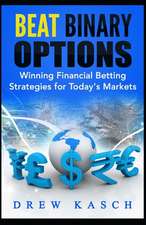Advanced Portfolio Management – A Quant′s Guide for Fundamental Investors
Autor G Paleologoen Limba Engleză Hardback – 3 oct 2021
You have great investment ideas. If you turn them into highly profitable portfolios, this book is for you.
Advanced Portfolio Management: A Quant’s Guide for Fundamental Investors is for fundamental equity analysts and portfolio managers, present, and future. Whatever stage you are at in your career, you have valuable investment ideas but always need knowledge to turn them into money. This book will introduce you to a framework for portfolio construction and risk management that is grounded in sound theory and tested by successful fundamental portfolio managers. The emphasis is on theory relevant to fundamental portfolio managers that works in practice, enabling you to convert ideas into a strategy portfolio that is both profitable and resilient. Intuition always comes first, and this book helps to lay out simple but effective "rules of thumb" that require little effort to implement and understand. At the same time, the book shows how to implement sophisticated techniques in order to meet the challenges a successful investor faces as his or her strategy grows in size and complexity. Advanced Portfolio Management also contains more advanced material and a quantitative appendix, which benefit quantitative researchers who are members of fundamental teams.
You will learn how to:
- Separate stock-specific return drivers from the investment environment’s return drivers
- Understand current investment themes
- Size your cash positions based on
- Your investment ideas
- Understand your performance
- Measure and decompose risk
- Hedge the risk you don’t want
- Use diversification to your advantage
- Manage losses and control tail risk
- Set your leverage
Author Giuseppe A. Paleologo has consulted, collaborated, taught, and drank strong wine with some of the best stock-pickers in the world; he has traded tens of billions of dollars hedging and optimizing their books and has helped them navigate through big drawdowns and even bigger recoveries. Whether or not you have access to risk models or advanced mathematical background, you will benefit from the techniques and the insights contained in the book—and won't find them covered anywhere else.
Preț: 219.43 lei
Nou
42.00€ • 45.64$ • 35.30£
Carte disponibilă
Livrare economică 31 martie-14 aprilie
Livrare express 14-20 martie pentru 36.13 lei
Specificații
ISBN-10: 1119789796
Pagini: 208
Dimensiuni: 159 x 233 x 19 mm
Greutate: 0.48 kg
Editura: Wiley
Locul publicării:Hoboken, United States

























